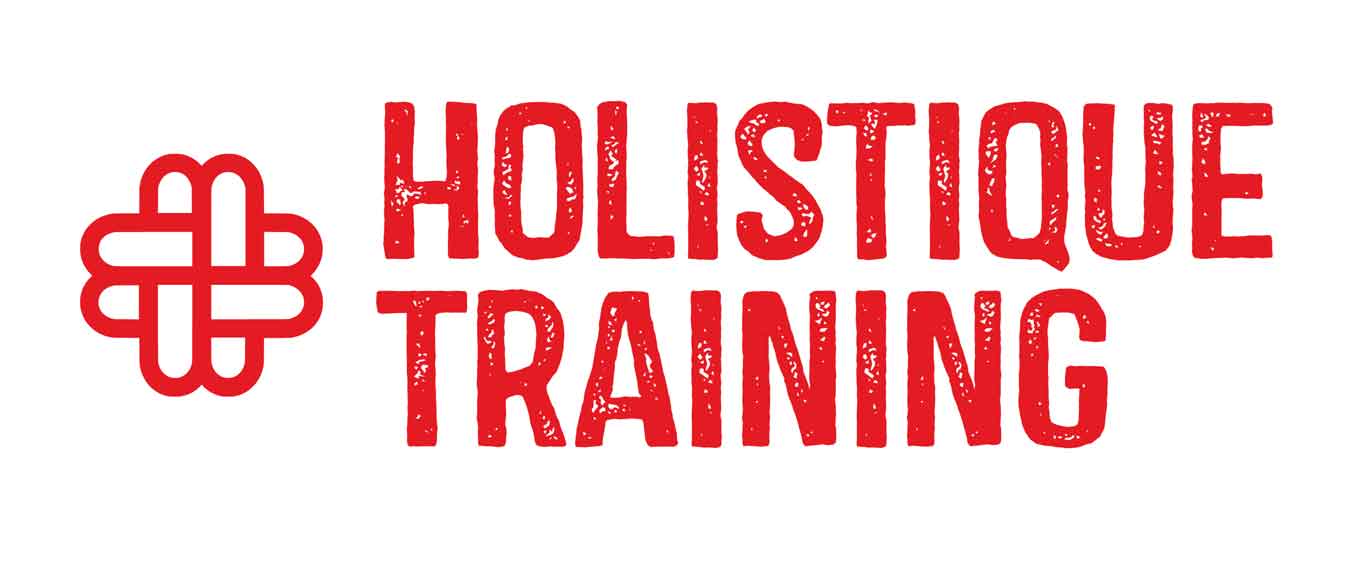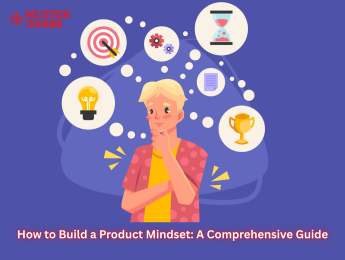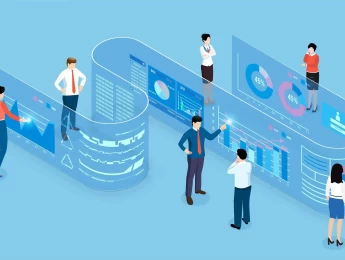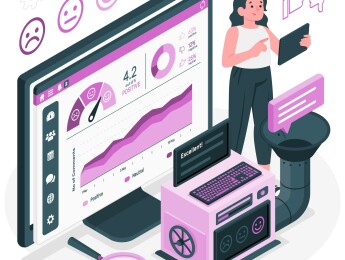- Table of Contents
- Introduction
- What Is a Product Mindset?
- Why Is a Product Mindset Important?
- 1. Customer-Centric Approach
- 2. Long-Term Value Creation
- 3. Agility and Adaptability
- 4. Ownership and Accountability
- 5. Data-Driven Decision Making
- 6. Fostering Innovation and Creativity
- 7. Cross-Functional Collaboration
- 8. Scalability and Sustainability
- Product Mindset vs. Project Mindset
- How to Build a Product Mindset
- 1. Adopt an Outcome-Oriented Approach
- 2. Embrace Customer Feedback
- 3. Foster Cross-Functional Collaboration
- 4. Encourage Experimentation and Learning
- 5. Think Beyond Launch
- 6. Measure What Matters
- 7. Cultivate an Ownership Culture
- Example of Shifting to a Product Mindset
- The Future of Product Development
- 1. AI and Automation in Product Development
- 2. Increased Focus on Personalization
- 3. Agile and Continuous Delivery Models
- 4. Incorporation of Sustainability in Product Development
- 5. Cross-Disciplinary Collaboration
- 6. Remote and Distributed Teams
- 7. Customer-Driven Innovation
- 8. Data-Driven Product Development
- 9. Greater Focus on User Experience (UX)
- Conclusion
Introduction
Success in product development doesn’t happen by chance—it requires a strategic approach that balances innovation, user needs, and long-term growth. Many teams fall into the trap of focusing only on short-term deliverables, treating development as a series of tasks rather than an ongoing process of value creation. This is where theproduct mindset comes in.
A product mindset encourages organizations and teams to think beyond individual projects and focus on continuous improvement, customer experience, and market relevance. This shift in thinking leads to more sustainable success and helps teams develop products that truly meet users' needs.
This blog post explores what a product mindset is, why it matters, how it differs from a project mindset, and practical steps to adopt this approach. Additionally, we’ll examine an example of shifting to a product mindset and discuss what the future holds for product development.
What Is a Product Mindset?
Aproduct mindset is a way of thinking that prioritizes delivering long-term value to users rather than just completing tasks or projects. It focuses on outcomes instead of outputs, emphasizing adaptability, continuous improvement, and customer-centricity.
Instead of treating a product as something that has a start and end date, a product mindset views it as an evolving entity that needs ongoing attention, updates, and refinements. This mindset encourages teams to:
- Understand the problem they are solving rather than just executing predefined solutions
- Prioritize customer feedback and market needs
- Embrace experimentation, iteration, and learning
- Measure success through long-term impact rather than short-term deliverables
Why Is a Product Mindset Important?
A product mindset fosters innovation, agility, and long-term success. Here’s why adopting this way of thinking is crucial:
1. Customer-Centric Approach
A product mindset ensures that every decision made is rooted in delivering value to the customer. By continuously gathering feedback and analyzing user behavior, product teams can fine-tune the product to better address users' needs, improving overall customer satisfaction. When teams prioritize the customer experience, they build stronger relationships, foster loyalty, and ultimately drive greater business success.
2. Long-Term Value Creation
Adopting a product mindset shifts the focus from completing tasks to delivering ongoing value. This mindset acknowledges that products require continuous evolution, with regular updates, enhancements, and feature rollouts based on user feedback. By prioritizing long-term impact, businesses can create products that stay relevant, competitive, and sustainable in a constantly evolving market.
3. Agility and Adaptability
A product mindset equips teams to be more responsive to market changes, technological advances, and shifting customer preferences. Instead of sticking to a rigid roadmap, teams can adjust strategies and release new features or iterations based on real-time data. This adaptability allows businesses to stay ahead of competitors and respond to market demands swiftly, fostering a culture of innovation and resilience.
4. Ownership and Accountability
When teams adopt a product mindset, they take responsibility for the product’s performance throughout its lifecycle. This ownership mentality goes beyond just delivering features or meeting deadlines; it means teams are actively involved in measuring success and making necessary adjustments even after launch. This accountability ensures that the product continues to evolve and meet user needs effectively, leading to higher-quality outcomes.
5. Data-Driven Decision Making
Instead of making decisions based on assumptions, a product mindset emphasizes the use of data to drive decisions. By leveraging user analytics, A/B testing, and customer feedback, teams can validate ideas, identify pain points, and optimize their products accordingly. This data-driven approach minimizes risks, reduces the chances of failure, and ensures that each decision aligns with user preferences and market trends.
6. Fostering Innovation and Creativity
A product mindset encourages teams to think outside the box and come up with creative solutions to challenges. By focusing on long-term goals and constantly iterating based on feedback, product teams can push the boundaries of what’s possible, creating unique and innovative solutions that meet customer needs and stand out in the market.
7. Cross-Functional Collaboration
A product mindset promotes collaboration between different departments, including development, marketing, sales, and customer support. This holistic approach ensures that every aspect of the product, from its design to its marketing strategy, is aligned with the customer’s needs and business goals. The result is a more cohesive and successful product launch and continued growth.
8. Scalability and Sustainability
With a product mindset, the focus is on building scalable and sustainable solutions that can grow with the business. This includes planning for future enhancements and ensuring that the product can be easily updated or expanded to accommodate new user requirements, market shifts, and technological advancements. By considering long-term scalability, teams create products that are built to last and grow alongside the company.
Product Mindset vs. Project Mindset
While both mindsets aim to achieve specific outcomes, they operate differently. Here’s how they compare:
Aspect | Product Mindset | Project Mindset |
Focus | Continuous improvement and long-term value | Completing tasks within a set timeline |
End Goal | Ongoing user satisfaction and market fit | Deliverables and meeting deadlines |
Success Metric | Customer retention, engagement, and impact | Completion of scope, on-time delivery |
Flexibility | Agile, iterative, and adaptable | Follows a structured, predefined plan |
Ownership | Team owns the product’s lifecycle | Team moves on after project completion |
Shifting from a project to a product mindset means embracing uncertainty, focusing on impact rather than output, and prioritizing long-term improvements over short-term wins.
How to Build a Product Mindset
1. Adopt an Outcome-Oriented Approach
To build a product mindset, teams must shift from focusing on tasks and outputs to prioritizingoutcomes—the real-world impact of their work. This means instead of simply launching features or completing predefined project lists, teams should ask themselves, “How will this improve the user experience? What measurable value will this add to the product or the business?” This outcome-oriented thinking ensures that every decision aligns with the broader goals of enhancing customer satisfaction, increasing engagement, or solving real-world problems. By focusing on results, rather than the process or features themselves, teams can ensure that they are consistently moving in the direction of long-term success.
2. Embrace Customer Feedback
In a product mindset,customer feedback is not a one-time activity or an afterthought; it’s a continuous process that drives development. Teams must engage with their users regularly—whether through surveys, interviews, or user testing—to gain insights into how the product is meeting their needs and where improvements are necessary. Additionally, understanding user pain points and desires allows teams to iterate on solutions more effectively. Embracing customer feedback means adapting the product based on real-world experiences, ensuring it’s always evolving to meet the ever-changing demands of users.
3. Foster Cross-Functional Collaboration
A product is rarely the result of one individual’s work; it’s acollaborative effort across various teams—development, design, marketing, sales, and customer support. To successfully build a product mindset, these teams must work together seamlessly. Cross-functional collaboration encourages the sharing of insights from different perspectives, leading to better decision-making and a more well-rounded understanding of the product’s impact. By fostering a culture of collaboration, teams are able to align on the vision for the product and work cohesively toward delivering value. This shared ownership ensures that no aspect of the product, from functionality to customer communication, is overlooked.
4. Encourage Experimentation and Learning
In a product mindset,failure is viewed as a learning opportunity rather than a setback. Encouraging a culture of experimentation allows teams to test assumptions through prototypes, A/B testing, and pilot programs before committing to large-scale changes. This iterative approach enables teams to quickly learn from their mistakes and pivot when necessary, ensuring that product development is agile and adaptable. It also helps uncover innovative solutions that may not have been obvious at the outset. Emphasizing experimentation fosters a growth mindset, where teams are not afraid to try new ideas, fail fast, and continue refining the product based on real-world results.
5. Think Beyond Launch
A common pitfall of project-based thinking is seeing thelaunch as the end. However, a product mindset understands that launching a product is just the beginning. After the launch, teams must continue monitoring user behavior, gathering feedback, and making improvements. Regularly releasing updates, adding features, and refining the product based on market trends ensures that the product doesn’t become outdated or irrelevant. By thinking beyond launch, teams can maintain a cycle of continuous improvement that sustains the product’s success long after its initial release.
6. Measure What Matters
To effectively measure success, it’s crucial to focus onkey performance indicators (KPIs) that align with long-term goals. Rather than getting caught up in vanity metrics, such as the number of features released or short-term milestones, teams should focus onmeaningful metrics like user retention, engagement, customer satisfaction, and product impact. This data should guide decision-making, highlighting areas for improvement and confirming whether the product is meeting its objectives. By measuring what truly matters, teams can stay aligned with the overarching mission of delivering value to the users and achieving sustainable business growth.
7. Cultivate an Ownership Culture
When teams take ownership of the entireproduct lifecycle, they become more invested in its success. Building a product mindset requires creating an environment where individuals and teams feel responsible for the product’s performance, from ideation to post-launch updates. This sense of ownership leads to a greater commitment to quality, more proactive problem-solving, and a stronger desire to see the product succeed. Empowering team members to take initiative fosters a sense of pride and accountability that is crucial for driving continuous improvement and ensuring long-term product success.
By following these steps and embedding them into the daily routines and processes of product teams, organizations can effectively build aproduct mindset that drives long-term value and success. The shift from a short-term, task-based approach to a more holistic, outcome-driven mindset is essential for developing products that truly resonate with users and stand the test of time.
Example of Shifting to a Product Mindset
Let’s consider asoftware development team working on a mobile banking app.
Before adopting a product mindset (Project Mindset):
- The team focuses on delivering a set of features outlined by stakeholders.
- Once the features are completed, the project is considered "done."
- There’s little follow-up on how users interact with the new features.
After shifting to a product mindset:
- The team continuously monitors user behavior and feedback.
- Instead of blindly following a feature list, they prioritize the most impactful updates.
- They implement A/B testing to optimize the user experience.
- Success is measured through engagement rates, customer retention, and usability improvements.
This shift enables the team to create a banking app that evolves based on real user needs rather than rigid project requirements.
The Future of Product Development
The future of product development is set to be shaped by emerging technologies, shifting market dynamics, and evolving customer expectations. As businesses strive to stay competitive in an increasingly digital world, the way products are developed will continue to evolve. Below are key trends and shifts that are likely to define the future of product development:
1. AI and Automation in Product Development
Artificial intelligence (AI) and machine learning are revolutionizing the way products are developed by enabling teams to analyze large sets of data in real-time. With AI, product teams can gain deep insights into customer behavior, predict future trends, and automate repetitive tasks, freeing up valuable time for creative problem-solving. Additionally, AI-powered tools can help teams test product ideas through simulations, refining features before they are even built. As AI technology advances, the role of automation will increase, leading to more efficient, scalable, and data-driven product development processes. This will not only speed up time-to-market but also enhance the product's ability to meet evolving customer demands.
2. Increased Focus on Personalization
As customers become more discerning and demand products tailored to their specific needs,personalization will become a critical component of future product development. With access to vast amounts of customer data, businesses will be able to create hyper-personalized experiences that cater to individual preferences and behaviors. This could range from customized product features to personalized user interfaces that adjust based on a customer's past interactions with the product. The future of product development will see an increased reliance on data analytics and AI to drive this level of personalization, allowing companies to create deeper, more meaningful relationships with their customers.
3. Agile and Continuous Delivery Models
The traditional model of product development, where teams follow a linear sequence from ideation to launch, is rapidly being replaced byagile methodologies. Agile product development, which prioritizes flexibility, speed, and iteration, allows teams to release products and updates more frequently. This means that businesses can respond quickly to changing market demands, improve product functionality based on real-time feedback, and minimize the risk of failure by making incremental improvements. In the future, we can expect an even stronger shift toward agile practices, with continuous delivery becoming the norm. Product teams will be focused not just on initial launches, but on consistently enhancing the product throughout its lifecycle.
4. Incorporation of Sustainability in Product Development
As consumers and businesses alike place increasing importance onsustainability, the future of product development will undoubtedly prioritize eco-friendly and socially responsible practices. From sourcing raw materials to manufacturing and packaging, companies will need to consider the environmental impact of their products. This shift will push organizations to adopt circular product design principles, focusing on creating products that can be reused, repaired, or recycled rather than discarded. Sustainability will no longer be a nice-to-have feature but a fundamental part of the product development process, with companies that fail to adapt risking reputational damage and losing customer loyalty.
5. Cross-Disciplinary Collaboration
Product development will continue to rely oncross-disciplinary collaboration as the future of products becomes more complex. The rise of digital products and services that integrate with physical devices (such as Internet of Things or IoT products) will require expertise from diverse fields—engineering, data science, design, marketing, and customer support—working together from the outset. Teams will need to break down silos and collaborate more closely, ensuring that each area of expertise contributes to the product's overall success. This interconnected approach will lead to smarter, more user-friendly products that better meet customer needs.
Aspect | Product Mindset: Then | Product Mindset: Now |
Focus | Task completion and meeting deadlines | Continuous improvement and long-term value |
Customer Involvement | Limited feedback, often post-launch | Ongoing feedback loops with active user involvement |
Adaptability | Rigid roadmaps, limited flexibility | Agile development, frequent iterations based on data |
Ownership | Responsibility ends after product launch | Teams take ownership throughout the entire lifecycle |
Decision Making | Assumptions, based on pre-launch analysis | Data-driven decisions, validated through real-time metrics |
6. Remote and Distributed Teams
The shift towardsremote work is influencing product development teams. Remote and distributed teams have become more common, especially after the pandemic, and they will continue to play a pivotal role in the future of product development. While this presents challenges in terms of communication and coordination, it also opens up opportunities for accessing talent from all around the world, allowing companies to bring together diverse perspectives and skills. The future of product development will require new tools and strategies to facilitate seamless collaboration across different time zones and locations, ensuring that teams can continue to work effectively while maintaining innovation and speed.
7. Customer-Driven Innovation
The concept ofco-creation and customer-driven innovation will become more prevalent. Companies are no longer the sole creators of products; instead, they will work alongside customers to develop and refine their offerings. Through platforms that facilitate direct communication with customers, businesses can gather ideas, solicit feedback, and involve users in the product design process from the very beginning. By embracing this collaborative approach, companies can build products that are directly aligned with customer desires and ensure higher levels of satisfaction and engagement.
8. Data-Driven Product Development
The integration ofbig data andadvanced analytics into the product development lifecycle will continue to expand. Product teams will use customer data not just to understand behaviors and preferences but also to predict future needs and optimize the product experience. Predictive analytics can help businesses identify trends, uncover hidden opportunities, and mitigate risks long before they become issues. This data-driven approach will enable product teams to make more informed, evidence-based decisions, leading to better products that resonate more effectively with users.
9. Greater Focus on User Experience (UX)
The importance ofuser experience (UX) will only grow as products become more complex and integrated into everyday life. Future product development will place an even stronger emphasis on creating intuitive, seamless, and enjoyable experiences for users. UX design will become more sophisticated, integrating user feedback at every stage of development, ensuring that products are not only functional but also delightful to interact with. As competition intensifies in almost every industry, the quality of the user experience will become a key differentiator for brands looking to stand out and retain customers.
The future of product development will be characterized by greater agility, a heightened focus on customer-centricity, and the integration of emerging technologies such as AI and big data. As businesses strive to stay competitive, the need for continuous improvement and innovation will be more critical than ever. By embracing new ways of thinking—such as cross-functional collaboration, sustainability, and data-driven decision-making—companies can build products that not only meet but exceed customer expectations. Ultimately, the future of product development will revolve around creating smarter, more personalized, and more sustainable products that drive long-term value for both users and businesses.
Conclusion
Developing a product mindset is more than just a shift in terminology—it represents a profound transformation in how teams approach, develop, and sustain products. It’s about adopting a mindset that prioritizes the long-term impact of the product and continuously adapts to meet the changing needs of the market and customers. This shift requires a fundamental change in thinking: from focusing on completing tasks and meeting short-term deadlines to focusing on creating lasting value through constant improvement and innovation.
Adopting a product mindset means seeing beyond the project lifecycle and understanding that the journey doesn’t end with a product launch. It’s about creating products that evolve, improve over time, and remain relevant in an ever-changing market. This shift towards a continuous feedback loop ensures that products are not only functional at launch but also meet ongoing user needs and expectations, thus driving sustained value for both businesses and customers.
Whether you're a developer, product manager, or business leader, embracing a product mindset will not only enhance your team's performance but also give your organization a competitive edge. It will enable you to adapt to change swiftly, innovate continuously, and build deeper relationships with your customers, all of which are essential in today’s fast-paced, customer-centric business world. A product mindset is a key differentiator for companies striving to remain ahead of the curve and deliver long-term success.
To effectively develop this mindset and equip yourself with the tools needed to succeed in a rapidly evolving market, consider enrolling in ourProduct Management & Marketing for B2B course. This course is designed to provide you with the comprehensive knowledge, strategies, and frameworks required to excel in product management and marketing in the B2B space. Learn how to align your product strategy with market needs, leverage data for continuous improvement, and foster cross-functional collaboration that drives success. By investing in your product management skills, you’ll be prepared to navigate the complexities of product development, ultimately ensuring that your products deliver lasting value and foster sustainable growth.
























